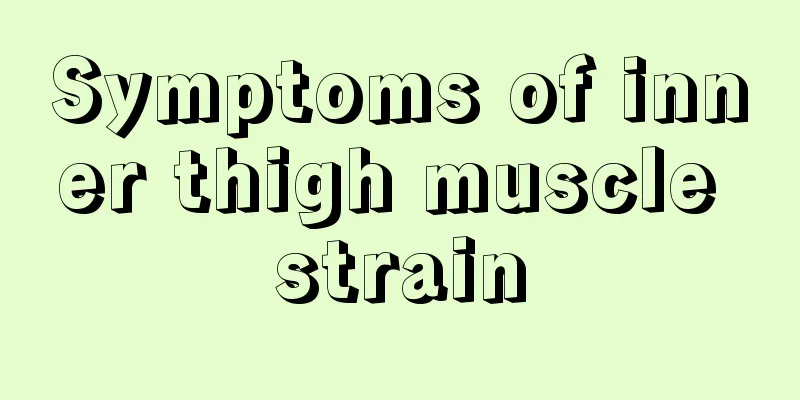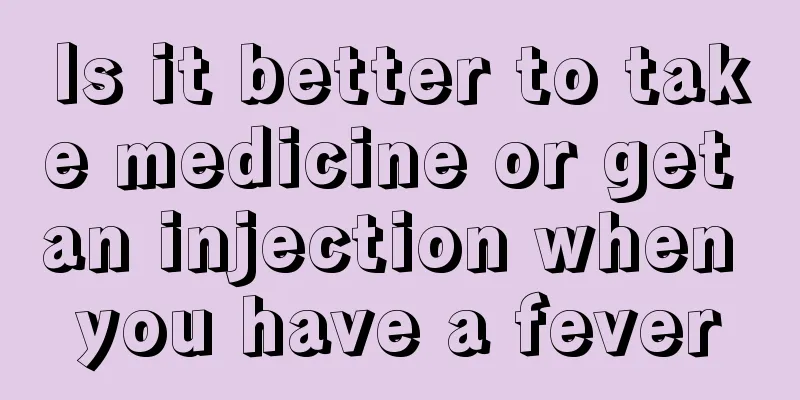Can I take calcium tablets if I have bone spurs on my knees?

|
Bone spurs are a common type of bone hyperplasia. They are mainly caused by long-term friction between bones that compresses the nerves. The general symptom is bone pain. Patients need to eat more foods containing calcium to relieve the symptoms. In the case of bone spurs on the knee, you can take calcium tablets, but severe bone spurs still require a CT scan to determine the location of the disease and then adjust the bones. Can I take calcium tablets if I have bone spurs? Bone hyperplasia and bone spurs generally occur at the site of bone friction. They are normal physiological growths formed by long-term friction to protect the friction surface. However, due to excessive growth, "bone spurs" are formed, which compress nerves and cause pain locally or in the area governed by the nerves. Calcium is an indispensable component of bones. Generally, calcium should be supplemented daily from the age of 20, because the daily calcium loss of adults is 500 mg/day. The Chinese eating habits result in the daily oral intake not reaching the loss amount, and at the same time only 40% of the supplemented calcium can be absorbed. Therefore, there is still a long way to go in calcium supplementation. Generally, elderly people suffer from osteoporosis, which is caused by insufficient bone density, resulting in increased brittleness, easy fractures, and a slow recovery, which takes three to six months to fully grow or form bone callus. Children, on the other hand, usually suffer from "greenstick fractures", which are also easy to recover from. This is caused by the amount of bone density. Therefore, calcium supplements are one of the minerals that everyone should supplement every day. You should also take some other multivitamins. Through the introduction above, you know that you can take calcium tablets for bone spurs! Can you take calcium tablets for bone spurs? In a word, you can take calcium tablets, but you also need to supplement other vitamins. At the same time, patients should avoid overwork. Bone spurs may cause patients to have difficulty in movement or even lose their ability to move. They should go to the hospital for examination and treatment in time to avoid worsening of the disease. 3 Symptoms of bone spurs 1. Degenerative lesions of the cervical spine The neck feels stiff, has limited mobility, and has snapping sounds when the neck moves. The pain often radiates to the shoulders and upper limbs. The hands and fingers have numbness and an electric shock-like sensation, which may be aggravated by moving the neck to a certain angle. Different lesions affect different parts of the body and cause different symptoms. In severe cases, the cervical spinal cord may be compressed, leading to paralysis. Certain types of cervical vertigo can also cause cervical vertigo, cervical spondylosis hypertension, cardiovascular and cerebrovascular diseases, gastritis, angina pectoris, dysphagia, etc. 2. Lumbar degenerative disease L3 and L4 are the most common. Clinically, symptoms such as soreness, distension, stiffness, fatigue in the lumbar spine and lumbar soft tissues, and even limited bending ability are common. If the adjacent nerve roots are compressed, it may cause corresponding symptoms, such as local pain, stiffness, posterior root neuralgia, numbness, etc. Compression of the sciatic nerve can cause sciatica, with radiating numbness, burning pain, cramping pain, and stringy pain in the affected limb, radiating to the entire lower limb. Intermittent claudication may occur if spinal canal stenosis occurs. 3. Degenerative lesions of the knee joint For those with a slow onset, the knee pain is not serious, but it is persistent and dull. The pain worsens when the temperature drops, which is related to climate change. The knee joints are painful and stiff when starting to move after getting up in the morning, walking for a long time, doing strenuous exercise, or standing up from sitting for a long time. The pain improves after a little activity. Going up and down stairs is difficult, and the knee joints become weak when going downstairs, making it easy to fall. Pain and stiffness when squatting. In severe cases, there is soreness and swelling in the joints, lameness, and limited joint function, which is most obvious when squatting. There is a popping sound when extending and flexing. Some patients may have joint effusion, obvious local swelling and tenderness. Those with combined rheumatic disease may have redness, swelling and deformity of the joints. |
<<: Will the spots rebound after using medicine?
>>: Advantages and disadvantages of intramedullary nail fixation of fractures
Recommend
Is skin cancer hereditary?
Skin cancer is one of the more serious cancers. I...
How to identify authentic oolong tea
In our daily life, we can see tea everywhere. Bas...
How long can you live with subacute liver failure
The liver is an important organ in the body. Its ...
Warning: Intestinal cancer may cause abdominal pain in the early stages
The early symptoms of colorectal cancer are mainl...
What happens if there are blood streaks on the nails?
Nails are the keratinous shells at the ends of th...
What foods are good for patients with advanced liver cancer? What should be paid attention to in the diet of patients with advanced liver cancer?
For every patient who has reached the advanced st...
What to do with an 86-year-old man with advanced lung cancer
What should I do if an 86-year-old person has adv...
The nail of the thumb is black
In daily life, many people have black vertical li...
How to treat prickly heat in adults conveniently
Prickly heat is a common problem in summer. It is...
What causes spots under the eyes
Many people often encounter the problem of freckl...
Could discomfort in the prostate after ejaculation be a prostate tumor?
After ejaculation, some male friends will feel sp...
Can sweet potatoes and bananas be eaten together
Sweet potatoes and bananas both look like two sti...
How to treat primary liver cancer? Try 6 treatments
Primary liver cancer is actually a relatively com...
What is lupus maculae
Systemic lupus erythematosus is an autoimmune dis...
There are several common care methods for melanoma
Melanoma is the most malignant type of skin cance...









